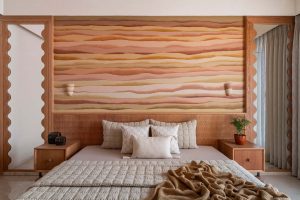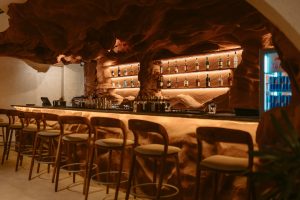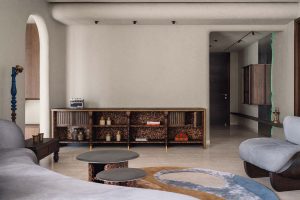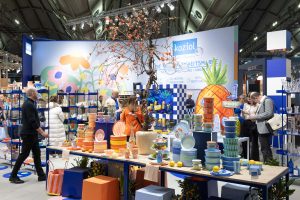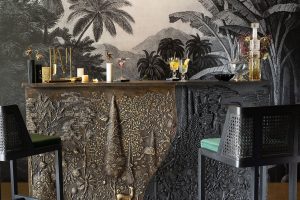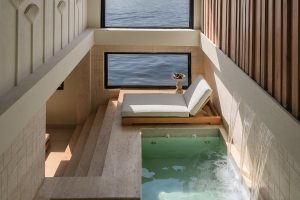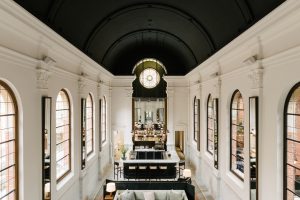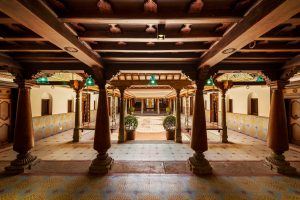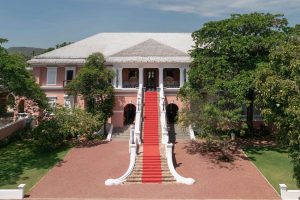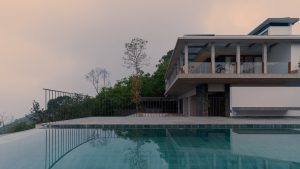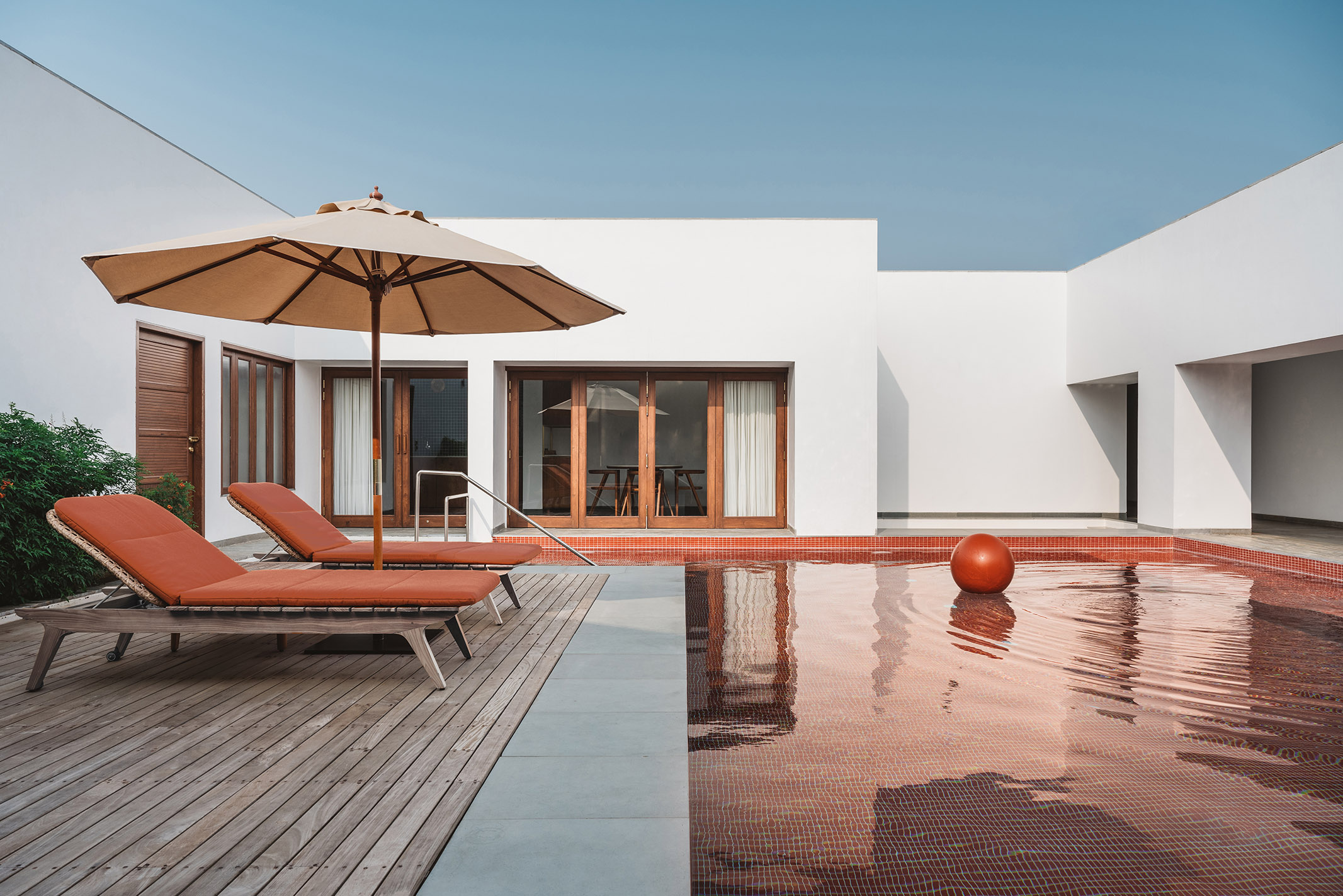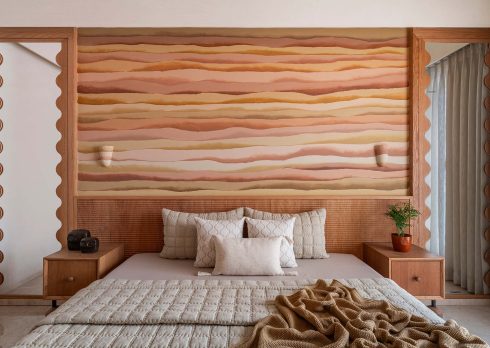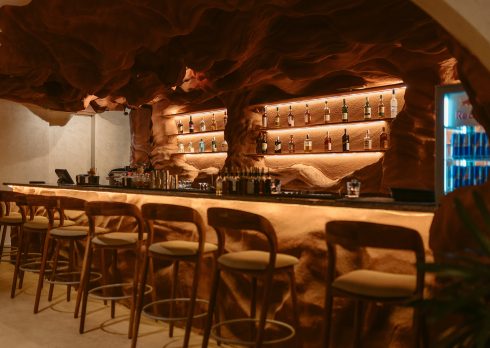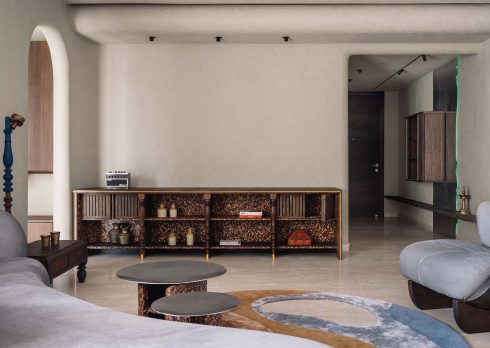Rust-Hued Pools, Shapeless Architecture, And Dramatic Skylights In This Gujarat Home
The architecture industry has predominantly prioritized the external envelope of a building with a defined form; however, how does one design and execute a formless fabrication? The founder and creative director of Ahmedabad-based Design Ni Dukaan, Veeram Shah embarks on an ambitious endeavour to derive a visual narrative that is discernible only from within. The resulting architecture is a sprawling collection of separate parts, a house without elevations, and an inward-looking ‘Enclosure’; located in Gujarat’s quaint town of Himmatnagar.
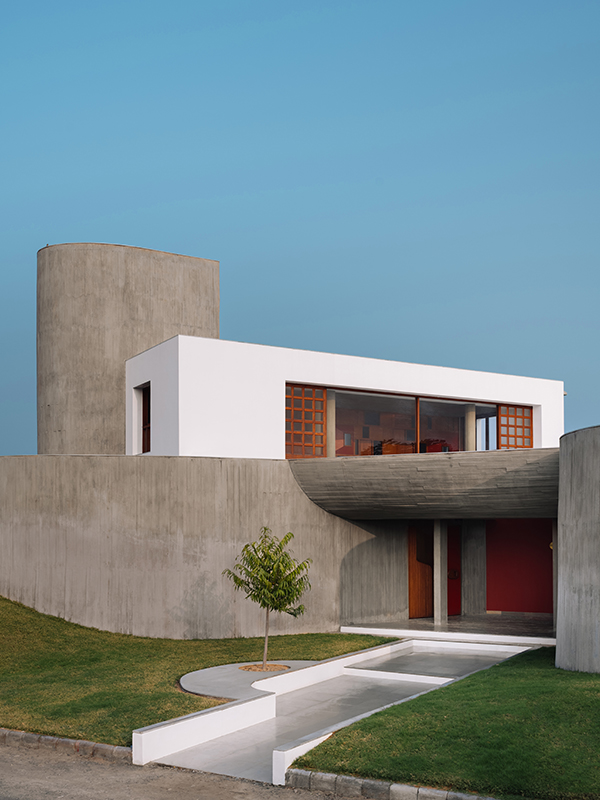
The layout calls for the house to be enclosed by a boundary with an organic outline, that takes on the expression of a citadel with its hilltop site and walled-off design. The peripheral walls consist of two curved and two straight surfaces, whose intersections are subtly and cleverly superimposed to create points of entry and exit into the surrounding landscape. A fluid, raw-textured main entrance canopy takes shape where two curved walls converge, juxtaposed with warm terracotta, Kota stone, wood and brass. This guides the visitors to the contrasting interior spaces finished in softer, white-plastered walls.
Also read: This Weekend Home In Surat Embraces The Rustic-Modern Aesthetic
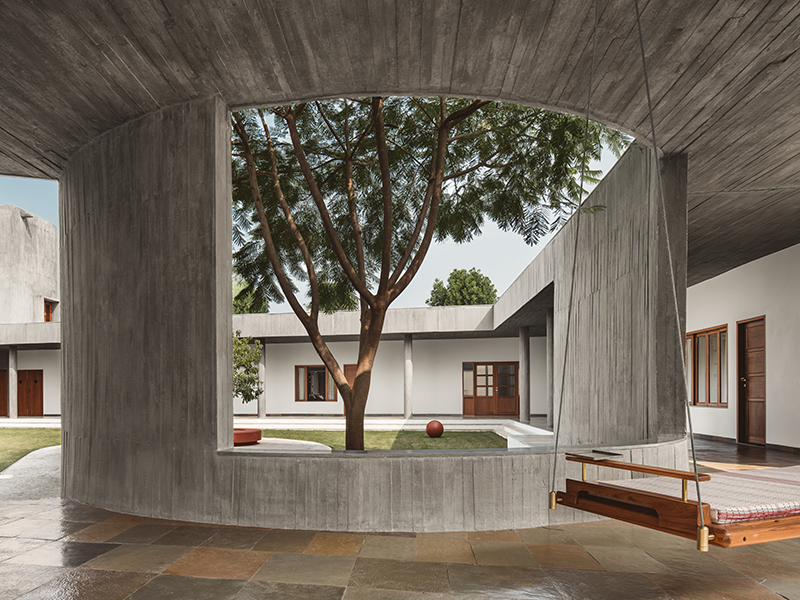
The planning of the footprint attempts to separate public, private, and transitional zones of the house, while still maintaining the continuity of flow around a central open space. All parts of the house open onto a central courtyard, via a covered corridor, ensuring that all sequences receive adequate light and ventilation while being protected from the harsh tropical climate. The revitalising elements of the courtyard – a Gulmohar tree, an open sky, a swing, and built-in benches connect the indoors to the outdoors seamlessly.
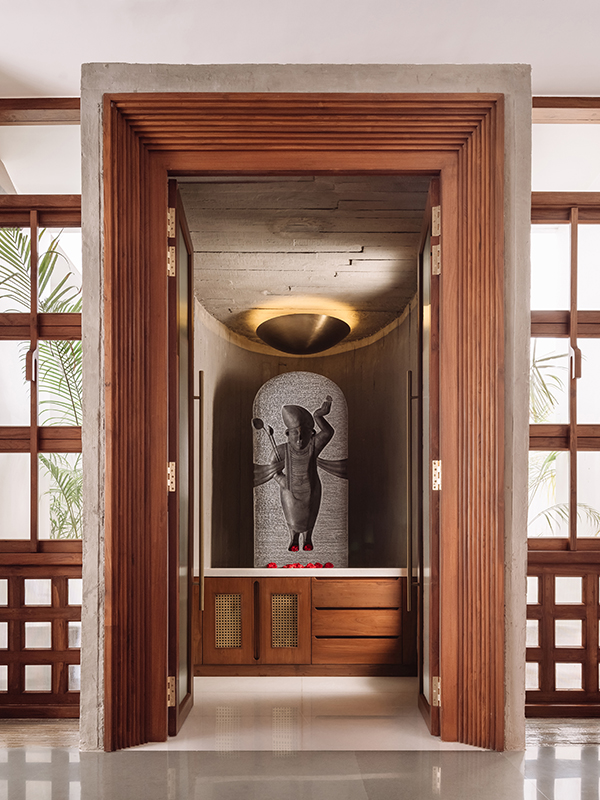
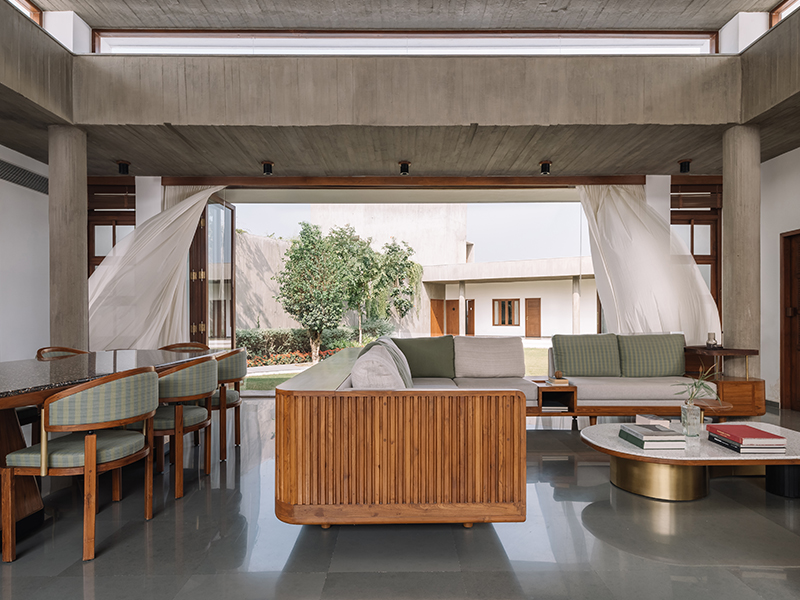
Abutting the waiting area at the entrance, there is a mandir housed in a floating cylinder wherein the idol is engraved into a slab of solid black granite by a local artist from Surat. In line with the rest of the interior, the living room boasts a palette of concrete, kota stone, white and wood and brass accents. It looks out onto the courtyard while connecting to the private spaces. According to the footprint, the kitchen is accessible from the public spaces as well as the main dining halls; it is hinged to the visitors’ lounge to the right of the main entrance.
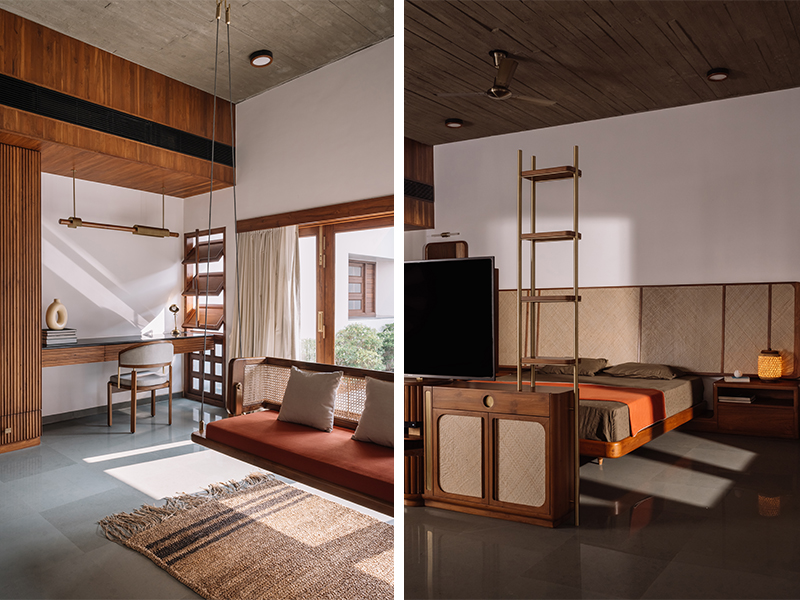
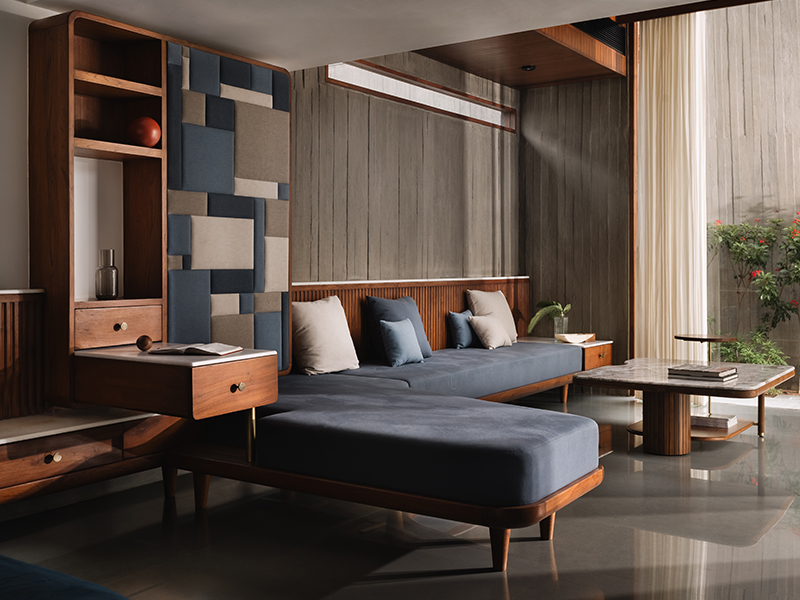
A kota-floored passageway leads one to the private areas of the house including the owner’s master suite which comprises – a bedroom with an attached bath and open shower and a study that can be converted into an extra room for close friends; squared by another set of suites for their two sons, and a patio for the swimming pool and gym, secluding them from the rest of the house. The passageway leads further to guest rooms, a small pantry and a vast expanse of the landscaped courtyard. There is a mezzanine level that was added later supported by a sculptural spiral staircase strategically placed to hold the volume together.
Also read: #DPExclusive – This Manhattan Apartment By Aamir Khandwala Is A Collector’s Paradise
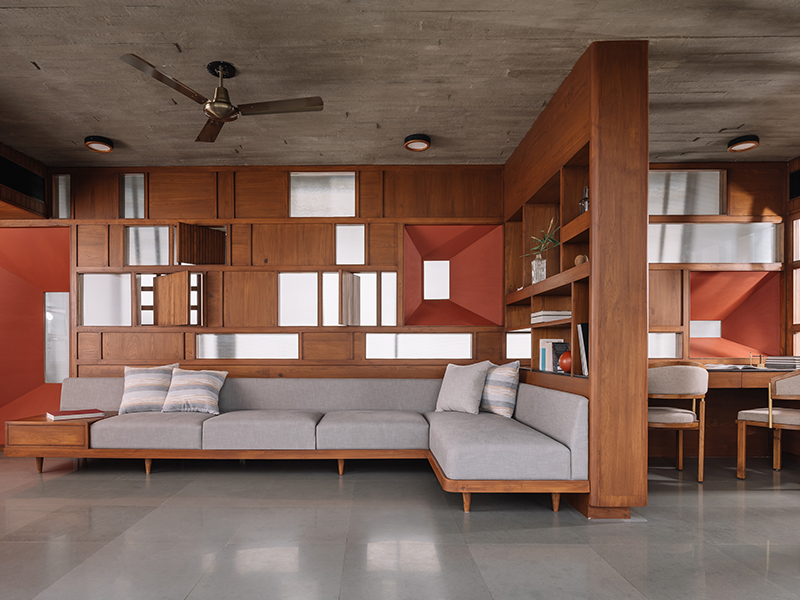
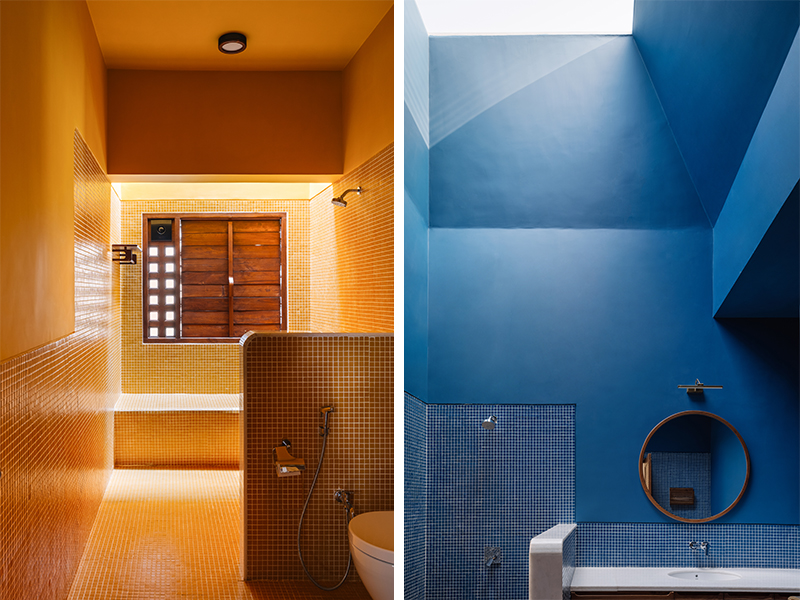
Much of the house is expressed in a muted material palette of concrete, discoloured kota stone, white and wood occasionally punctuated by a warm terracotta tone. Shah has created complex yet lively patterns using kota, using its textural play to achieve a strong visual impact. The only other use of colour is found in the most private spaces of the house, and the bathrooms are rendered with pops of vibrantly coloured tile work from Surface Plus and all bath fittings from Toto. To develop a comprehensive design language, every aspect of the project is addressed by the team, including landscaping and interiors – all furniture have been rigorously detailed by the craftsmen of Design Ni Dukaan. The light fittings are sourced from Trueform Energy with complete hardware from Hafele, whereas the accent lighting in the master bedroom and all turret lights are customised by the design team. The soft furnishings that blend with the interior theme are sourced from Himeya Life.
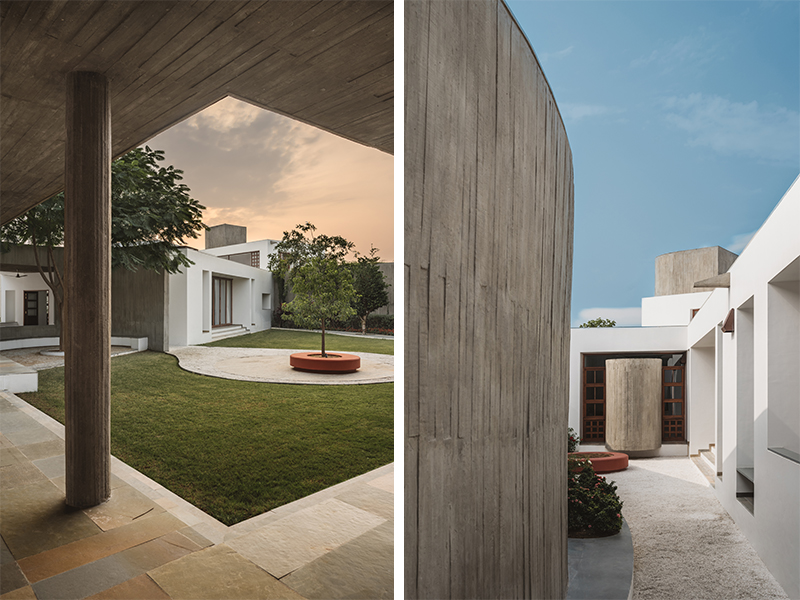
The design team faced practical issues in terms of scale, climate, and security which led to imagining a second skin wrapped around the structure, holding the separate parts together, and a series of courtyards that are inherent to the experience of the house. The materiality of the enclosure is largely informed by the local and rural context. “As an experiment, we asked a village contractor to build a sample wall in concrete, and the outcome: an unpredictable but beautiful texture caused by the shifting and warping of unbolted wooden formwork, was fascinating,” explains Shah.
“We decided to embrace these ‘anticipated imperfections’ as part of the construction process, even extending this choice to the use of other materials, the flooring in the corridors for example, which utilises strips of leftover stone from the interiors to mimic the pattern of the concrete walls.”
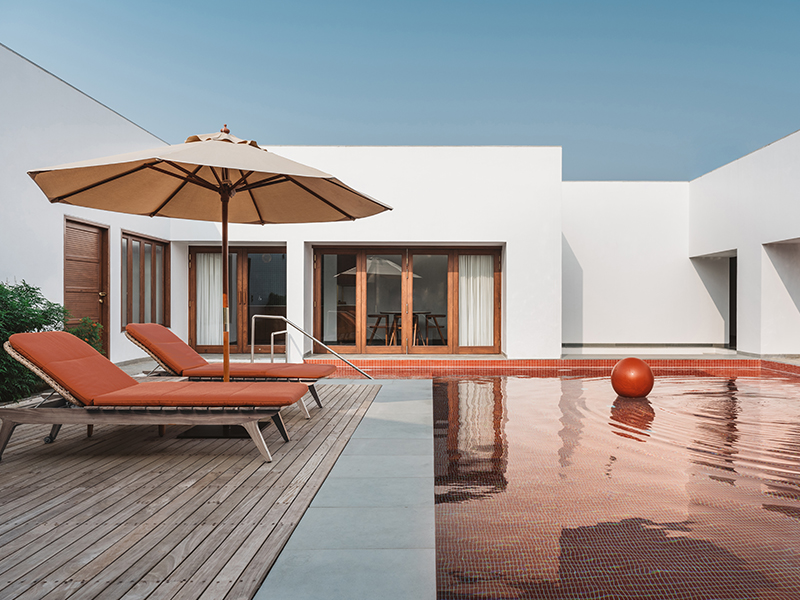
There are ancillary recreational spaces that have been planned in the vicinity of the suites. These include entertaining areas such as the party lawn, the visitor’s lounge and the artist lounge along with a steam sauna and gymnasium. Additionally, cantilevered columns, dramatic turret-like skylights and a brick-red pool make great focal points in the house. As the vegetation equally overpowers this backdrop of grey, the boundaries between inside and outside dissolve and diminish any notion of form.

“In the absence of a strong context, we were relying on the client’s brief to inspire the design, but his complete disinterest in how the house would look from the outside prompted us to question the very basis of built forms,” expresses Shah “This caused a shift in our perception that resulted in an inside-out approach to the design, wherein the experience of space from within took precedence over the external form.”
The peerless residence emerges from the surrounding expanded scenography and commands attention in scale, materiality and form. “The project was truly a celebration of the act of creation, which has become for us the essence of our design practice”, concludes Shah.
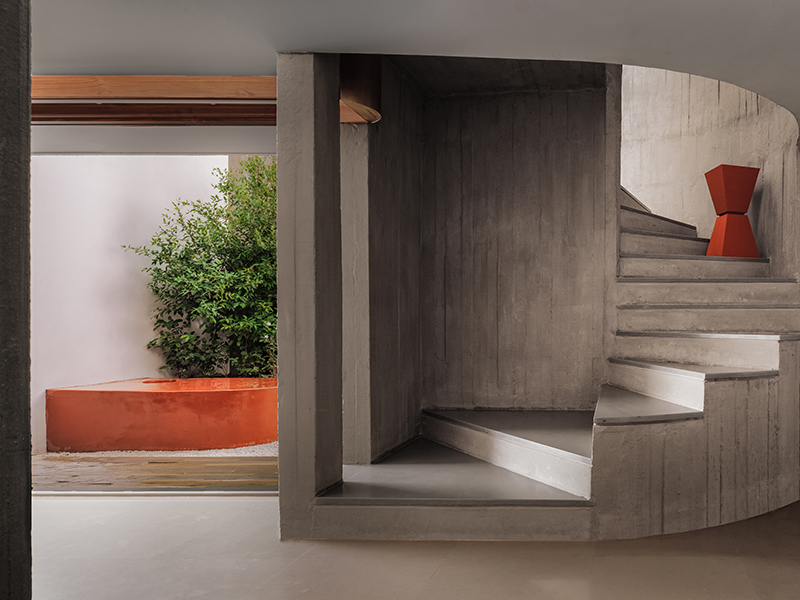
Also read: Everything You Need To Know About The Nita Mukesh Ambani Cultural Centre (NMACC) In Mumbai

